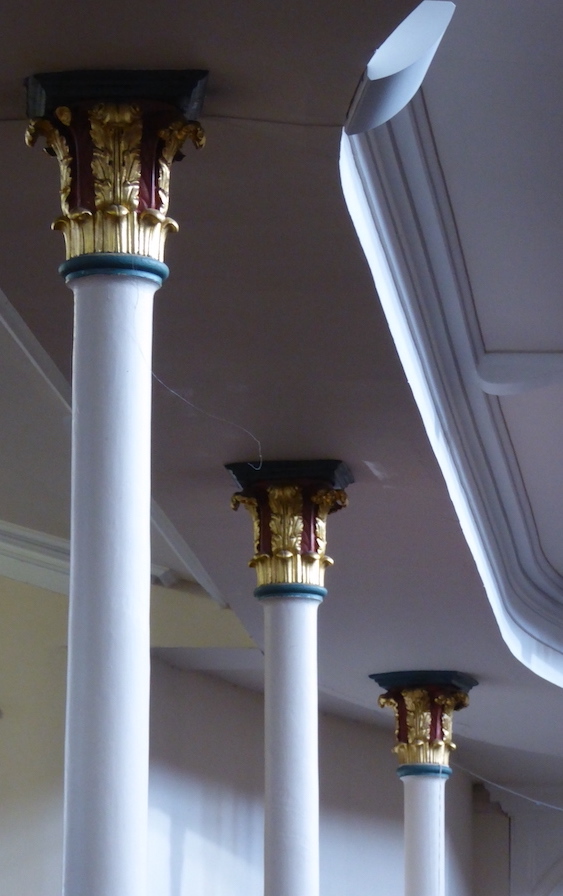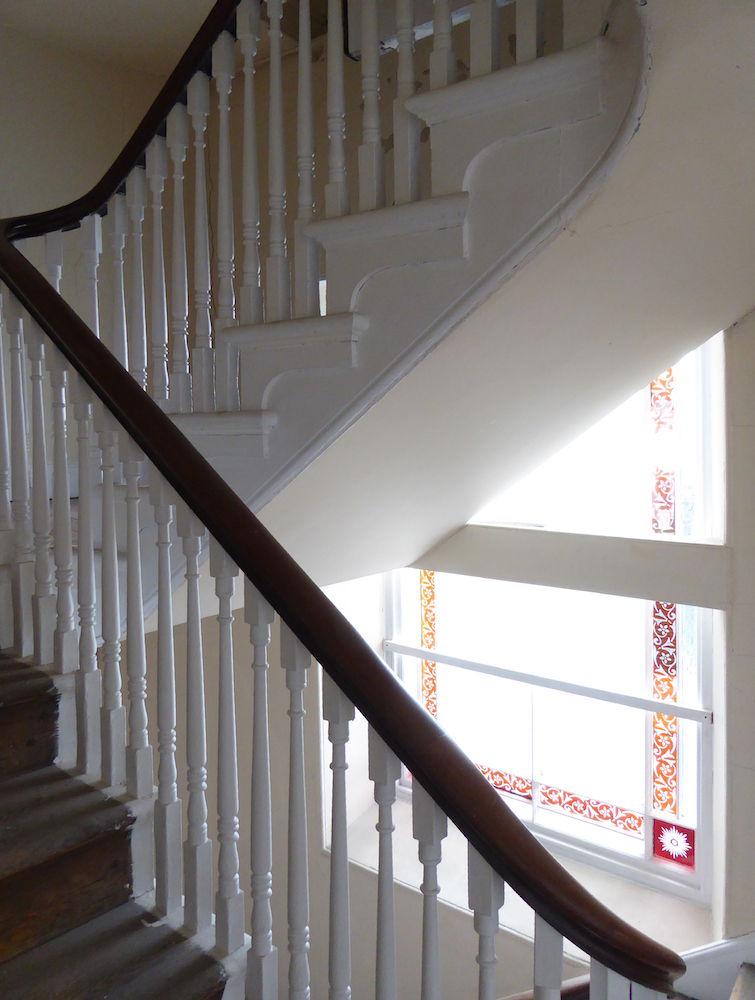Photographs by the author, who would like to thank Chris Williams, Head of Venue, for facilitating her visits. You may use the images without prior permission for any scholarly or educational purpose as long as you (1) credit the photographer and (2) link your document to this URL in a web document or to the Victorian Web in a print document. [Click on the images to enlarge them.]
Façade and exterior


The chapel, formerly known as the Centenary Methodist Chapel, was designed by James Simpson of Leeds; it cost £8,000 in 1839-40 (Pevsner and Neave 178; Inventory, building 24). The portico has four massive sandstone columns, a pediment and coffered ceiling; the rest of the building is in brick. There are three pairs of folding doors under the portico.


The centenary that the chapel celebrated was that of John Wesley’s ‘Aldersgate moment’ in 1838 which had led to the existence of the Methodist church. The building was a suitably confident statement, but its situation is cramped, facing onto housing on the other side of a narrow medieval street from at least the 1850s. Its dramatic façade is still hidden from direct view, now by the concrete and glass Stonebow House.

Entrance doors.
The interior – ground floor


Left: View towards pulpit. Right: Looking upwards at the the ceiling, from under the gallery.
The three doors in the portico open into a shallow vestibule, from where two further doors open directly into the chapel either side of the pulpit, or lead to staircases into the gallery. The Centenary Chapel was designed to accommodate 1,500 people on two levels in the chapel itself, with vestries and a caretaker's flat in a semi-basement below (Inventory, building 24). There are several early monuments on the walls, including one for the Methodist minister Joseph Agar, who died in 1847, by Joseph Waudby of York, and a later one for David Hill (1840-1896), a much revered member who served as a missionary in China.



Left to right: (a) View from the east end. Note the wall-mounted monuments. (b) Columns supporting the gallery, seen from ground floor. (c) The stairs up to the gallery.
The gallery which sweeps round three sides of the chapel is supported on cast-iron columns with capitals of Composite style. The first lighting would have been by candles or oil lamps, and gas lighting followed. There are vents for those systems in the ceiling concealed in some of the rosettes; these lead to flues in the roof.
Links to related material
Bibliography
An Inventory of the Historical Monuments in City of York, Volume 5, Central. Her Majesty's Stationery Office, London, 1981.
Murray, Hugh. Nathaniel Whittock’s Birds Eye View of the City of York in the 1850s. York: Friends of City Art Gallery, 1988.
Pevsner, Nikolaus, and David Neave. Yorkshire: York and the East Riding. New Haven and London: Yale University Press, 2002.
Created 12 September 2022